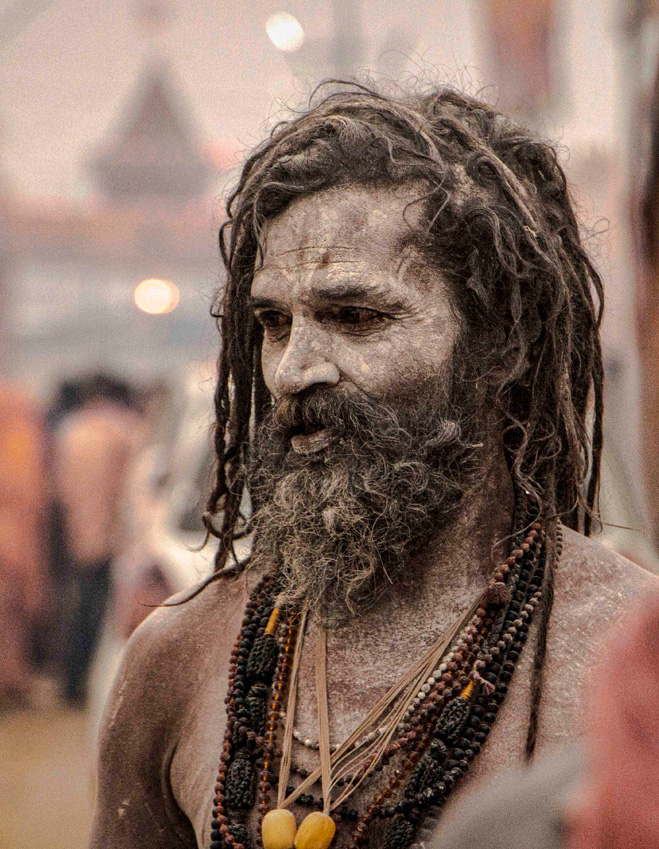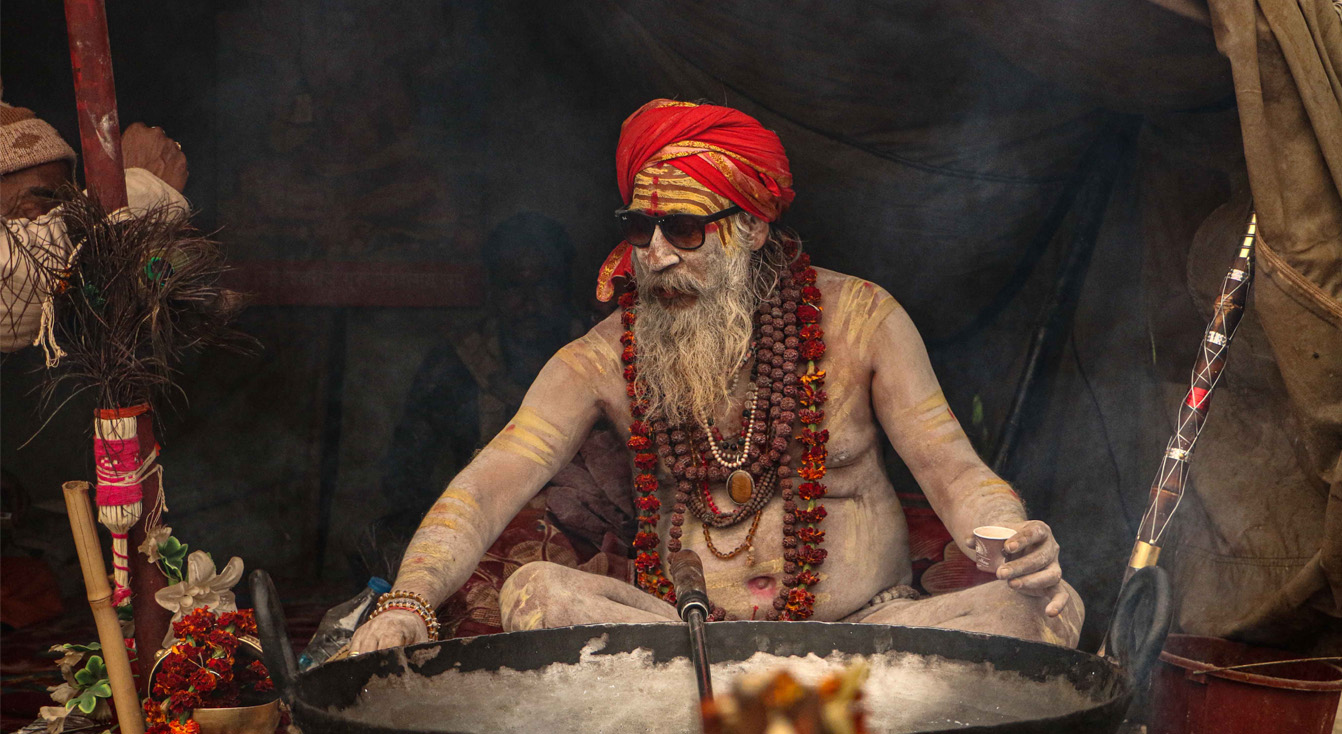January - February 2025
The ‘Mahakumbh’ Mela
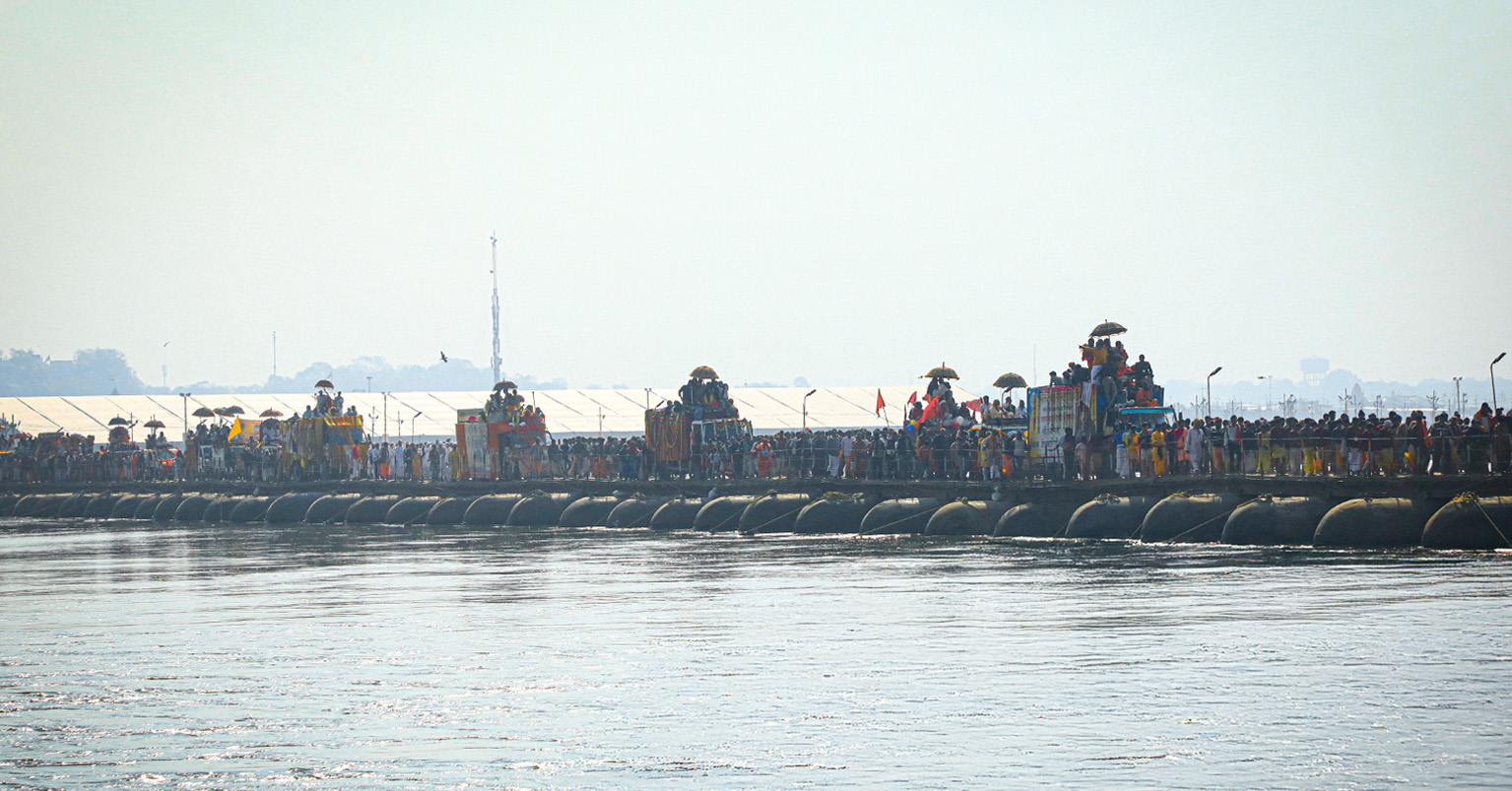
Can we relive the timeless story of immortality? In the cosmic concepts of Hinduism, immortality is achievable. It is not about an escape from perishing but rather an escape from vanishing. Simply said, the body is perishable but the soul continues to live on. In the Hindu story of cosmology, many great things were created as a result of a great celestial churning over a fabled pot of nectar. This nectar was said to contain the coveted potion for immortality. And to whip it into existence, it required all the energies of the cosmos. God Vishnu himself became the giant turtle on which Mount Mandar rested. It required the great demi- Gods to pull on one side and all the demons to pull from the other side. The great snake, Vasuki, became the rope. The great Mount Mandar stood as a churner, around which the snake was wrapped. Every force worked in coordination to create this coveted prize. So when the urn of nectar finally appeared, the demons and demi Gods all tried to selfishly claim this coveted nectar for themselves creating a huge tussle, during which a few drops fell to earth. At the confluence spot of the holy river Ganga and Yamuna and the underground River Saraswati, where legend has it, most of the treasured nectar fell. Since then, it is believed that a unique cosmic constellation returns every 12 years with the magic of the potion. In dedication to this mythology, there exists the great Kumbh Mela gathering of Prayagraj, where all kinds of people from the complex Hindu pantheon, come to partake in a ritual dipping in the waters of Ganga and recreate this story of the cosmos. It is a visual feast for photographers and an unparalleled event for those who like to observe human spiritual quests. This memorable journey to Prayagraj will take place from January through February 2025, an extraordinary event not to be missed if you are visiting India at this time.
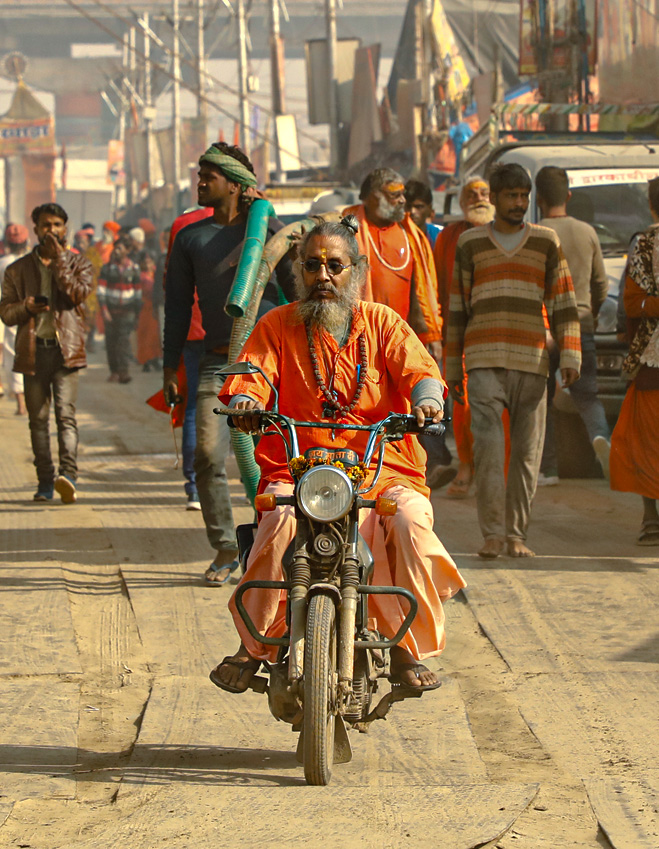
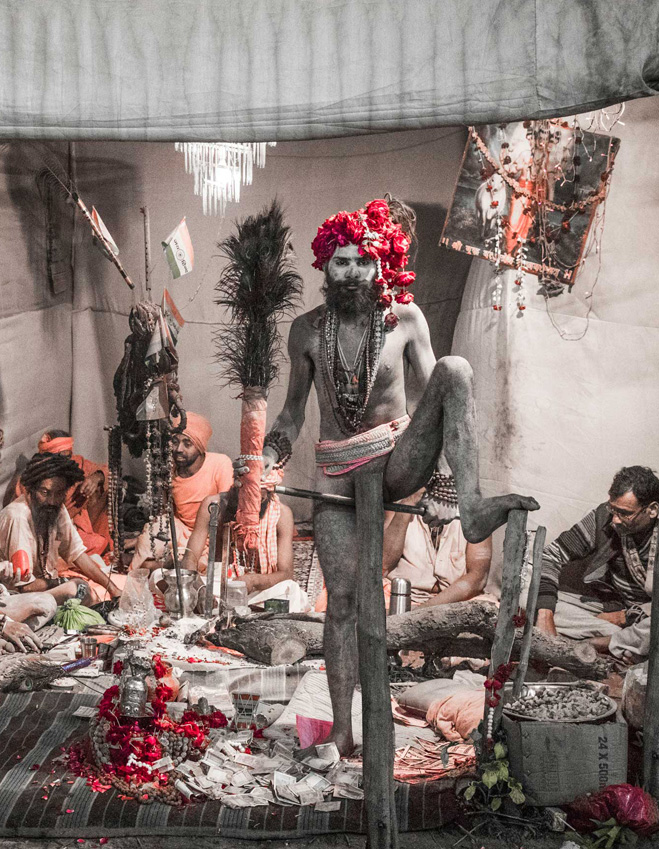
The Mahakumbh event of Prayagraj in 2025. What to expect, a typical day and the orientation.
It’s going to be a sprawling site. A temporary city will come up on the vast sandy triangle facing Ganga and Yamuna Rivers. This is where the pilgrims will gather and disperse all the time. There will be bazaars, shelters, help desks, watch towers, toilets and everything necesssary to smoothly manage a human traffic of a million to a few millions in any 24 hours duration. Across both the Rivers will be vast tented camps lined along broad streets. Many different Camps will be housing Sadhus of various Hindu sects with their disciples, their complete sleeping arrangements and kitchens. Explore more Camps and you will find those of prominent Hindu Gurus, meditating monks, spiritual preachers, makeshift Temples and Satsang Halls.
A typical day in Mahakumbh begins much earlier than sunrise when pilgrims make a beeline for holy dip. They take boat ride to the confluence spot and perform the worship rituals with the help of the priests of their clan. For much of the day, pilgrims pay visit to the various Camps of Gurus and Akharas where they take blessings of the sadhus, join the chanting kirtans and eat at various Bhandaras. Overall, it’s a mix of pilgrimage and entertainment. The crowded scene thins around the night time when pilgrims have either already left the scene or they have found a place to sleep in the Ashram Camp of their favourite Guru.
For orientation, there are elaborate arrangements in place. There are clear pathways and crowd is managed through a well thought dispersal plan. There are facilities and help desks everywhere. To avoid overcrowding, there are several pontoon bridges specifically created for the event. This allows easy access to and from the Camps across the rivers. Battery run rickshaws operate in the Camping city for commuting between the various locations. There are big parking spaces for vehicles on all roads leading to the Mahakumbh Mela. However on certain more auspicious days the crowds swell by several times and brings even more restrictions on vehicular movements. This means extra long walking on those days. It’s always advisable to reach at least a day earlier to enjoy these special days and leave a day later only. A point to note is that these auspicious days are of extremely great value as on these occasions all the grand processions of sadhus, Gurus and Mahamandaleshwars take place for bathing in Ganga. These days are known as Amrit Snan (Royal bath) days. Amrit Snan days of 2025 Mahakumbh are as under
Paush Purnima - January 13
Makar Sakranti - January 14
Mauni Amavasya - January 29
Vasant Panchmi - February 3
Maghi Purnima - February 12
Maha Shivratri - February 26
A note about Prayagraj
Prayagraj is situated at the holy confluence of river Ganga, Yamuna and Saraswati. Millions of Hindus will gather here for close to 2 months for holy dipping & other rituals. It’s a huge spectacle of human gathering, which is extremely well managed through precision planning on grand scale. Everyday the people just come & go however, there are certain very auspicious days when Hindu Sadhus, monks, hermits and sanyasis take out colorful processions for dipping at appointed hours. Through our past experiences of assisting travellers on such special days we can confirm that these are spectacles to witness. Prayagraj is just 100 Km upstream to Varanasi and it can be convenient in a tour to include the event with Varanasi.
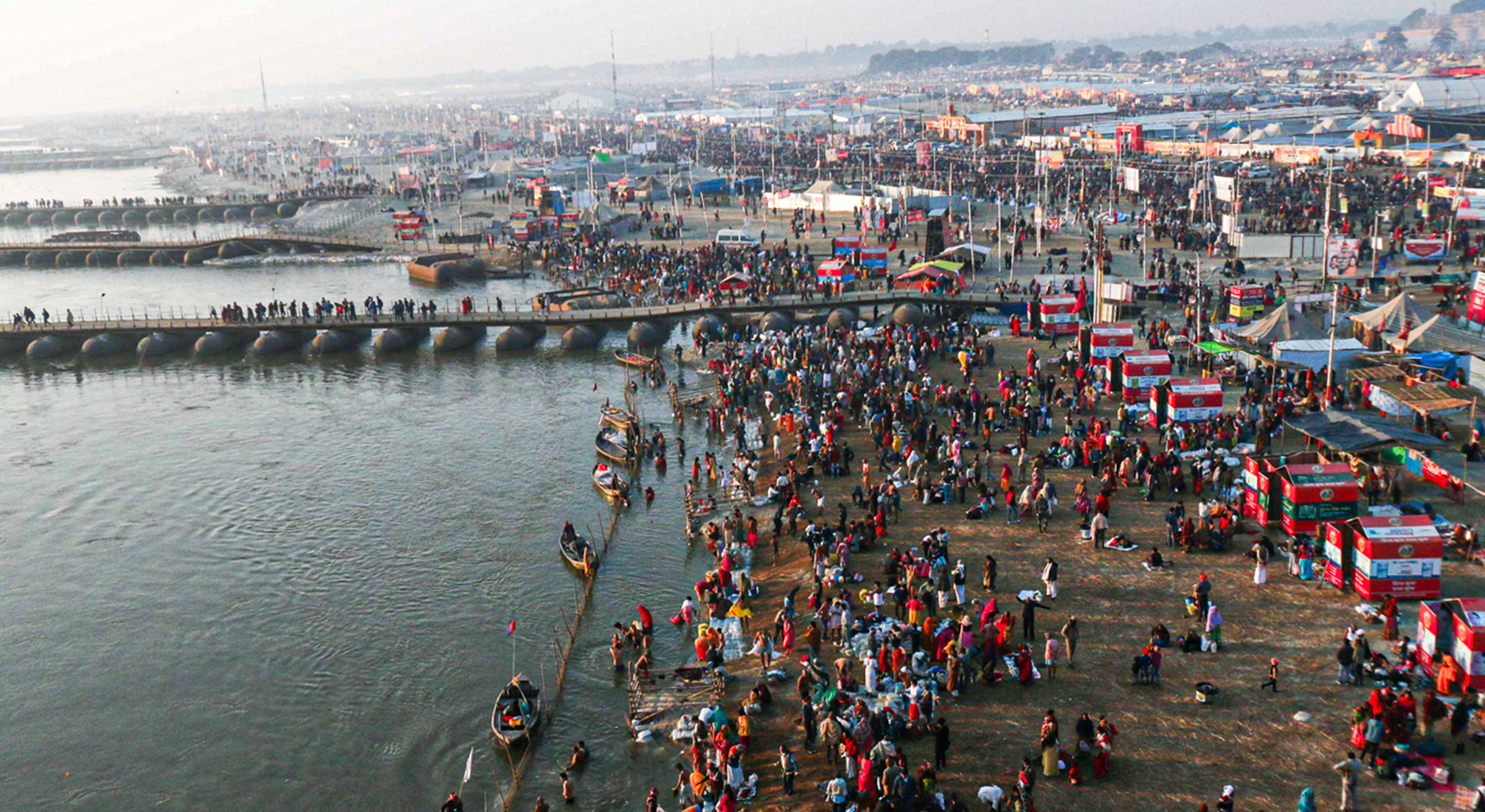
Process of customization
For building of optimum experience, certain specifications are important before a plan can be made. For example, a suggested plan may vary not just due to the number of days in hand but the dates on which the travel is being considered. Different days of the Mahakumbh Event will require different set of connectivity. A standard planning of itinerary is thus not possible. To effectively assist the travellers, only tailormade journeys are on offer.

